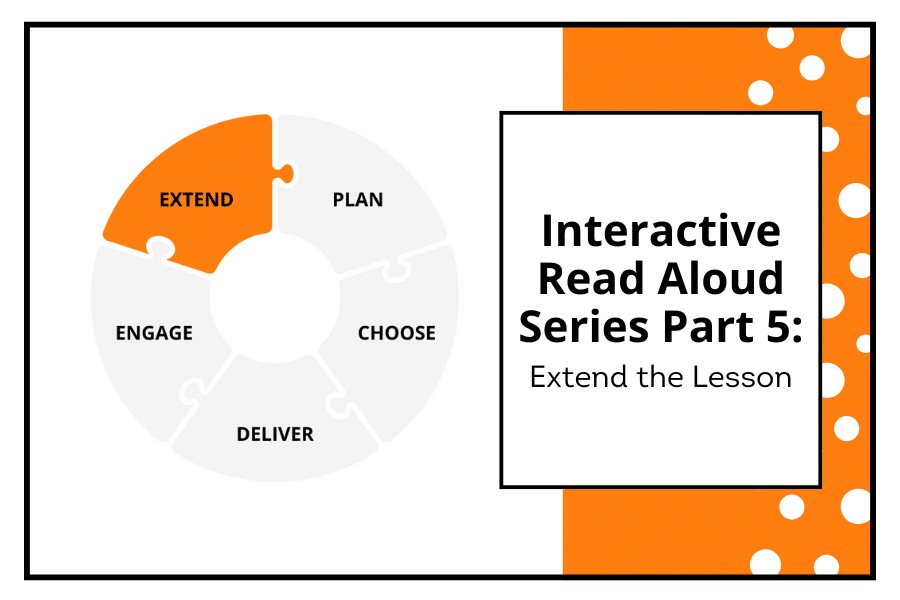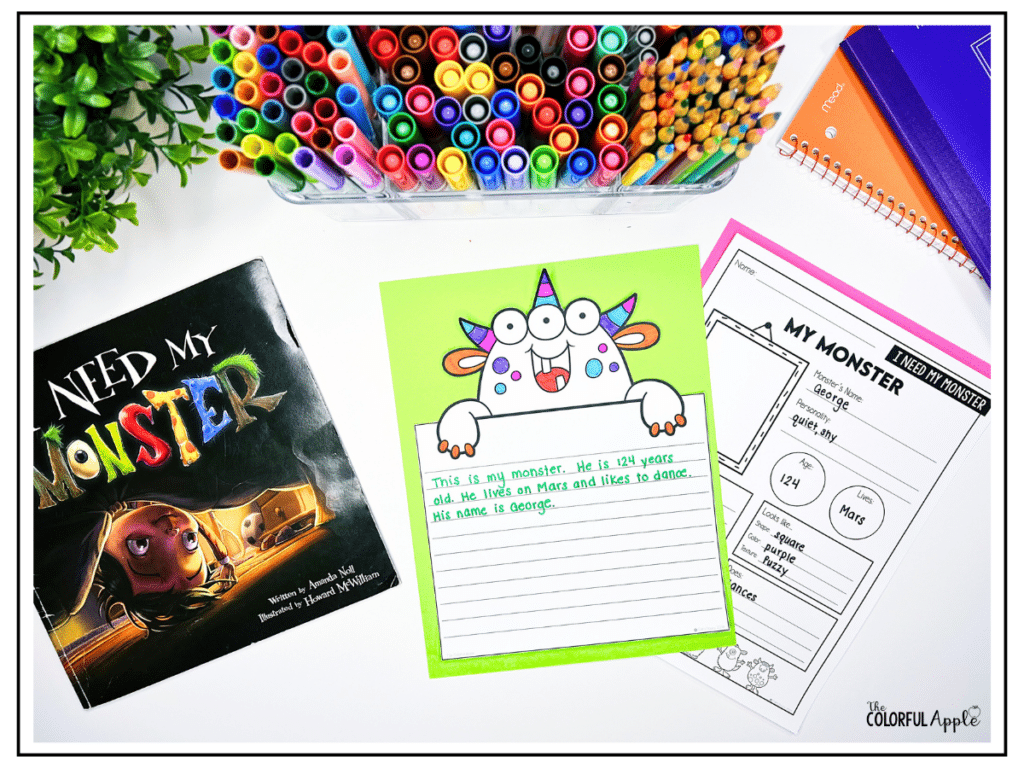Interactive Read Aloud Series Part 5:
How to Extend the Read Aloud Lesson

You’ve just finished reading a wonderful picture book to your class. The last page is turned, you close the book, and… now what? If you’ve ever felt uncertain about how to meaningfully extend your interactive read aloud, you’re not alone. This post will guide you through effective strategies to extend the read aloud lesson.
The Power of Post-Reading Discussion
Discussion is the bridge between reading and understanding. It’s where students process what they’ve heard, make connections, and deepen their comprehension. While it might be tempting to skip this step when time is tight, even a brief, focused discussion can significantly impact student learning.

Essential Discussion Elements
Retelling the Story
Retelling goes beyond simply recounting the plot. Encourage students to retell the story from different perspectives:
- Through another character’s eyes
- Focusing on problem and solution
- Highlighting cause and effect relationships
- Sequencing major events
This practice not only reinforces comprehension but also helps identify any misunderstandings that need clarification.
Sharing Thoughts and Making Connections
When students share their thinking about a story, they often make surprising and insightful connections. Create space for students to:
- Make text-to-self connections
- Share their reactions to story events
- Discuss character motivations
- Express opinions about author’s choices
To deepen these discussions, use prompts like “What made you think that?” or “Tell us more about that idea.”
Discussing Lessons Learned
Picture books often contain valuable life lessons, but discovering them should be an exploratory process. Instead of directly asking about the moral, try these approaches:
- Examine character growth and change
- Discuss how problems were solved
- Consider the author’s message
- Connect themes to students’ experiences
Checking Predictions
Revisiting predictions made before and during reading is a valuable metacognitive exercise. Have students:
- Compare predictions to actual events
- Identify clues that led to their predictions
- Discuss how and why predictions changed
- Reflect on their thinking process
Meaningful Activities to Extend the Read Aloud
While discussion is crucial, sometimes you’ll want to extend learning through focused activities. The key is choosing activities that serve a clear purpose and align with your learning objectives.
Types of Extension Activities
Graphic Organizers
These provide structure for student thinking and can be completed efficiently. Use them to:
- Analyze character traits
- Map story elements
- Compare and contrast
- Organize key details
Writing Responses
Quick writing activities help students process and respond to the text:
- Predict what happens next
- Write from a character’s perspective
- Respond to a specific aspect of the story
- Connect the text to personal experiences
Creative Connections
Hands-on activities bring the story or skill to life:
- Create alternative book covers
- Design character maps
- Act out key scenes
- Make story-related crafts that reinforce learning
Making It Work in Your Classroom
The most successful post-reading experiences happen when you:
- Plan ahead but remain flexible
- Keep your learning objective in focus
- Choose activities that work for your specific students
- Consider time constraints realistically
- Document student responses for assessment
Final Thoughts
Extending your interactive read aloud doesn’t have to be complicated or time-consuming. Focus on meaningful discussions, be intentional with your activities, and always keep your learning objective in mind. With these strategies, you can create powerful learning experiences that make the most of your read aloud time.
Remember, the goal isn’t to do everything after every read aloud. Instead, choose the discussion points and activities that best serve your students’ needs and your teaching objectives. Over time, you’ll develop a repertoire of go-to strategies that work well for your classroom.
